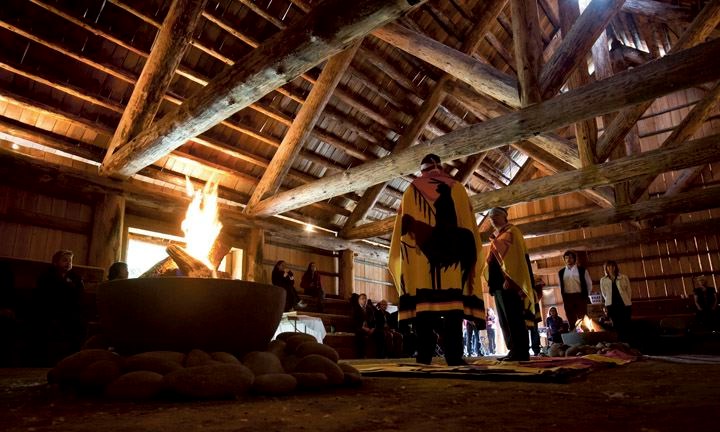The B.C. Treaty Process was one of the slowest legal paths any level of government has ever had to walk, in Canada. On Tuesday, a document was released jointly by the three sides involved in that process: the federal Government of Canada, the provincial Government of B.C., and the First Nations Summit representing the large array of aboriginal interests across the province.
The document sets out a set of recommendations they have agreed must be enacted to revive the process that has never functioned up to expectation.
Before the B.C. Treaty Process (BCTP) became formalized, there were almost zero treaties to show since the British government declared the place a colony in 1858, without the acknowledgment of a single indigenous culture living for eons on the same landbase.
The only exceptions were northeastern B.C.'s Treaty Eight nations (part of a sweeping Western Canadian treaty) who negotiated directly with London and ratified in 1899, and a pact negotiated in the early 1850s between inaugural B.C. governor James Douglas and about 12 aboriginal groups in the southern area of Vancouver Island.
BCTP was established in 1992-93 under the BC Treaty Commission. Scores of First Nations have entered this process and are currently at various stages of negotiations with the federal and provincial parties, but hardly any have completed a deal.
"We have seven final agreements, and it has taken 23 years to achieve that number," said John Rustad, B.C.'s Minister of Aboriginal Relations and Reconcilliation. "We have potentially more than 200 nations to deal with. You do the math on how long it will take, at that rate."
To shoot new energy into an almost inert process, a set of behind-the-scenes discussions were held between the First Nations Summit, the feds and B.C. talking about what it would take to streamline the way things were being done. A report was compiled making recommendations on how each could do their part to speed things up.
Each one signed their agreement in principle, and the recommendations were announced on Tuesday.
Grand Chief Edward John, a leader with the First Nations Summit and a hereditary chief of the Tl'azt'en Nation at Fort St. James, said the kickstart was welcome and hopefully signaled a larger attitude shift as well.
"This report comes at a very significant time, given Canada's recent decision to become a full, unqualified supporter of the United Nations' Declaration on the Rights of Indigenous Peoples," said John. "The implementation of the proposals in this report will help bring to life Canada's acknowledgment of the importance of concluding treaties with First Nations."
Rustad said it was true that the previous federal government had agreed to the internal examination of the process, but it was also true that the provincial and aboriginal sides at the table had been "aggressive" about getting deals done whereas the federal team was less forthcoming. That, he said, has shown early signs of improving under the new configuration of Parliament.
The new minister responsible at the federal level, Carolyn Bennett, said "The negotiations of modern treaties in British Columbia represent an ultimate expression of reconciliation with First Nations. The Government of Canada remains steadfast in its commitment to the British Columbia treaty negotiations process. This report is a first step and we will work in collaboration with our partners to advance these proposed new approaches and tools so we can create the momentum needed to expedite treaty negotiations, both in British Columbia and across Canada."
The new agreement seeks to allow for piecing treaties together a bit at a time, as First Nations are ready, on a case by case basis. It allows the other levels of government to negotiate core areas of interest into a treaty, then phase in secondary elements with later negotiations. It called for a more meaningful and logical approach to overlapping territories, and establishing a universal database of information to help speed up everybody's negotiations instead of one at a time.
The report also recommended making this new commitment to the BCTP public, to ensure there was public record of all this. Important for Rustad was another point of accountability: deadlines. The report urges a clock to start ticking whenever the negotiations reach certain stages, to keep the talks hitting time targets towards completion.
"If you're negotiating in good faith, that deadline would most likely be met by all sides," he said. "If you miss the deadline, there it was in open view, people will ask why that happened, and that's a good thing."



